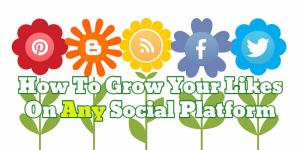Learn how using influencers can improve your discoverability and get your content in front of the right audience.

Practically every digital marketing budget in 2016 includes line items for both SEO and content marketing. If you want to add rocket fuel to any campaign’s overall impact, the inclusion of influencer marketing is a must. The right influencers will enhance brand discoverability and audience development, boosting reach, results and ROI. Here are six reasons to extend your existing SEO and content campaigns with influencers.
1. You are already invested
Whether your main campaign focus is organic search, paid search or both, content marketing is at the core. In fact, once a content strategy is set and you are ready to attract targeted eyeballs to your web presence to build awareness, the tactics of SEO, PPC, native ads, email and so on are simply techniques you are investing in to develop your audience. Adding influencer marketing is an effective way to extend the reach of an existing content campaign, as well as tapping into new audience sources, through people (influencers) who have access to your target market.
In a recent survey conducted by gShift, digital marketers were asked, “Is influencer marketing part of your digital marketing mix today?” Of the 250 respondents, 40 percent (100) indicated they do include influencer marketing, while 60 percent (150) indicated they do not yet leverage influencers. Given that influencer marketing has proven to be among the most cost-effective online customer acquisition methods, outperforming both organic and paid search (Tomoson 2015), it makes sense to explore it as a tactic and include influencers in an existing content campaign you are already invested in.

2. Influencers hold the keys to your audience
As marketers and digital marketers, one of our main objectives is to attract our target market to our web presence through content, which helps them make a decision to buy from our brand. Easy. Intercepting our target audience with our content is the not-so-easy part, and we’re always seeking new and clever ways to get in front of our audience.
Most likely, every single prospect and customer, otherwise known as your total addressable market, has a social media account — Facebook, Twitter, LinkedIn, YouTube, Pinterest, Instagram and so on. Further, they are likely “following” someone — an influencer.
Influencers hold the keys to your audience.
Using software, marketers can find groups of people (audience) matching their target market. For example, women between the ages of 30 and 45 in the Midwest; men over 35 years old in North America who love fishing; or corporate executives of B2B companies. Influencers, people with followers whose interests match those addressed by the brand, can then be identified for the digital marketer to reach out to.
Since influencers hold the keys, you have to earn their trust in order to access their followers. Brands should build strong relationships with properly identified influencers. Just as there are no quick wins with SEO, effective influencer marketing takes time. Once a brand has built a long-term relationship with an individual who shares a target audience, that person can either be engaged to participate in an existing digital marketing campaign or a unique one. And there is a paid, owned and earned model for engaging with influencers. Regardless of how you interact with your influencers, always ensure that you are able to measure their activity through to engagement with your website, and ultimately, to sales.
3. Content distribution
Content distribution in any digital campaign is paramount to its success. Investing in content marketing, then not focusing enough effort and time into getting your content “out there” is like fishing for tuna in a backyard pond when you live next to the ocean.
Thoughtful distribution and amplification — in all channels (e.g., social, email, paid search, SEO) is key. Influencer marketing is an important aspect to content distribution. Think of it this way: Every single person in every social channel is a potential point of distribution for your brand’s content. A rule of thumb is to invest a minimum of 25 percent of your budget and resources into distribution. See the Hierarchy of Web Presence Optimization.

In gShift’s survey, 250 digital marketers were asked, “How much of your digital marketing budget do you invest into content distribution?” Seventeen percent indicated they spend $0 on distributing content. For example, if they write a blog, they only post it to their website. Nineteen percent invest about 25 percent of their budget and resources, while just over half (54 percent) invest only 10 percent of their budget. Content distribution is one of the most significant missed opportunities in the execution of a digital marketing campaign.

Adding influencer marketing to the digital marketing mix will naturally increase these numbers and will further broaden your audience.
4. Word of mouth is powerful & trusted
Influencer marketing can be thought of as an extension of word-of-mouth (WOM) marketing. As digital marketers, we all understand the power of WOM. Nielson’s 2015 Global Trust in Advertising Report states the most credible advertising comes straight from the people we know and trust. Eight in 10 global respondents say they completely or somewhat trust the recommendations of friends and family, but this trust isn’t confined only to those in our inner circle. Two-thirds say they trust other consumers’ opinions as well.
Influencer marketing enables us to tap into the concept of WOM at a digital level, and why wouldn’t we? According to McKinsey, WOM is the primary factor influencing between 20 percent and 50 percent of all purchasing decisions. This makes adding influencer marketing to an existing digital marketing campaign a no-brainer.
5. Your long-tail SEO keywords will reveal long-tail influencers
Influencer marketing is not just about using celebrities to promote your brand. Rather it is more about finding long-tail influencers through great data sources.
Think about the long-tail SEO keywords you’ve proven generate search results, traffic and conversions. Apply the same logic and those same keywords to an influencer database. You want to find the influencers who are diligently and frequently talking about “red high-heel shoes with buckles” rather than just “red shoes” and whose audience is intently listening to influencers and the specific long-tail phrases they are using. Influencer marketing is built for addressing niches.
Just like other digital marketing decisions we make, great data is at the core of influencer marketing.
And don’t forget to measure and collect data on the impact each influencer is having on your brand’s web presence and engagement with your content. This can be accomplished through influencer analytics.
6. Your competitors are doing it
You had better believe it! If you’re still not convinced influencer marketing should be part of your digital marketing mix, here’s a simple, compelling reason to start: Your competition is already doing it. And if by chance they are not, then why not get a head start and begin “out-influencer marketing” them!
Great influencer marketing data will provide insights into competitive influencer activity.
Marketing Land – Internet Marketing News, Strategies & Tips
(48)
Report Post









